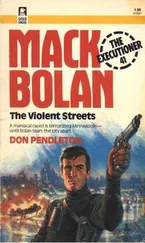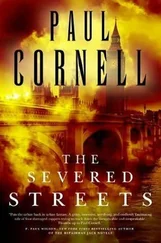In the winter, the detective stands in water and ash and smells that unmistakable odor as firefighters pry rubble off the bodies of children left behind when a bedroom space heater shorted. In the summer, he stands in a third-floor apartment with no windows and bad ventilation, watching the ME’s attendants move the bloated wreck of an eighty-six-year-old retiree who died in bed and stayed there until neighbors could no longer stand the smell. He steps back when they roll the poor soul, knowing that the torso is ripe and ready to burst and knowing, too, that the stench is going to be in the fibers of his clothes and on the hairs of his nose for the rest of the day. He sees the drownings that follow the first warm spring days and the senseless bar shootings that are a rite of the first July heat wave. In early fall, when the leaves turn and the schools open their doors, he spends a few days at Southwestern, or Lake Clifton, or some other high school where seventeen-year-old prodigies come to class with loaded.357s, then end the school day by shooting off a classmate’s fingers in the faculty parking lot. And on select mornings, all year long, he stands near the door of a tiled room in the basement of a state office building at Penn and Lombard, watching trained pathologists disassemble the dead.
For each body, he gives what he can afford to give and no more. He carefully measures out the required amount of energy and emotion, closes the file and moves on to the next call. And even after years of calls and bodies and crime scenes and interrogations, a good detective still answers the phone with the stubborn, unyielding belief that if he does his job, the truth is always knowable.
A homicide detective endures.
MONDAY, JANUARY 18
The Big Man sits with his back to the green metal bulkhead that separates the homicide and robbery offices, staring abstractedly at the city’s skyline through the corner window. His left hand cradles a glass mug in the shape of a globe, filled to the Arctic Circle with brown bile from the very bottom of the office coffeepot. On the desk in front of him is a thick red binder with the notation H8152 stamped on the front cover. He turns away from the window and stares at the binder with malevolence. The binder stares back.
It is a four-to-twelve shift, and for Donald Worden-the Big Man, the Bear, the only surviving natural police detective in America-it is the first day back from a long weekend that did nothing to change his disposition. The rest of his squad senses this and gives him wide berth, venturing into the coffee room only on errands.
“Hey, Donald,” offers Terry McLarney during one such sortie. “How was the weekend?”
Worden shrugs at his sergeant.
“Did you do anything?”
“No,” says Worden.
“Okay,” says McLarney. “So much for small talk.”
The Monroe Street shooting did this to him, stranding him at a corner desk in the coffee room like some iron-bottom dreadnought run aground in the shallows, waiting for a tide that might never come.
Five weeks old and no closer to a resolution than the morning after the murder, the death of John Randolph Scott in an alley off West Baltimore ’s Monroe Street remains the police department’s first priority. Reports written by Worden and his partner are copied not to his sergeant and lieutenant, as with any other investigation, but to the administrative lieutenant and the captain who commands Crimes Against Persons. From there, the reports travel down the hall to the colonel, then to Deputy Commissioner Mullen, two floors above.
The reports suggest little that can be called progress. And in every conversation with a superior, a sense of paranoia is palpable. Donald Worden can almost feel the department’s chain of command rustling nervously. In Worden’s mind, too, the Monroe Street case is a tinderbox, waiting only for the right community activist or storefront preacher to grab hold of it and scream racism or police brutality or cover-up loud enough and long enough for the mayor or the police commissioner to start calling for heads. Worden often finds himself wondering why it hasn’t happened yet.
Looking west out the coffee room window, Worden watches the winter sky fade to dark blue as the pink-orange light of the falling sun slips behind the skyline. The detective finishes his first cup of coffee, lumbers over to the metal coat rack and pulls a cigar from the inside pocket of a beige overcoat. His brand is Backwoods, a mean, black cigar sold at fine 7-Elevens everywhere.
A thin curl of acrid smoke follows Worden as he walks back to the desk and opens the red binder.
H8152
Homicide/Police Shooting
John Randolph Scott B/M/22
3022 Garrison Boulevard, Apt. 3
CC# 87-7L-13281
“What a piece of shit this turned out to be,” Worden says softly, leafing through the office reports at the front of the file. Pushing back in his chair, he props one leg on the desk and opens a second binder to a series of color photographs, stapled two to a page on a set of manila dividers.
John Randolph Scott lies on his back in the center of the alley. His face is smooth and unworn; he looks younger than his twenty-two years. Locked, empty eyes stare south toward the red brick side of a rowhouse. His clothes are those of any kid on any corner: black leather jacket, blue jeans, beige shirt, white tennis shoes. Another photo shows the victim rolled on his side, the rubber-gloved hand of a detective pointing to the small hole in the back of the leather jacket. An entrance wound, with the corresponding exit found in the left center chest. Above the young man’s eye is a bloody contusion caused by his fall to the concrete.
The medical examiner later determined that the bullet that killed John Randolph Scott fully penetrated his heart at a slightly downward angle, consistent with the downward slope of the alley in which he was found. Scott died almost instantly, the pathologists agreed, shot in the back while fleeing from officers of the Baltimore Police Department.
In its earliest hours, the Scott case was regarded not as a murder but as a police-involved shooting-a bad police shooting that would require some careful writing if a cop wasn’t going to be torn apart by a grand jury, but nothing that anyone was going to start calling a crime.
The victim was one of two young men in a Dodge Colt that a two-man Central District car made for stolen and chased from Martin Luther King Boulevard down I-170 and then onto Raynor Avenue, where Scott and a twenty-one-year-old companion bailed out and ran in separate directions through the alleys of the rowhouse ghetto. As the two Central uniforms jumped from the radio car to begin a foot chase, one of the officers, twenty-seven-year-old Brian Pedrick, stumbled and fired one shot from his service revolver. Pedrick later told investigators that the shot was an accident, a wayward round fired when he lost his footing while staggering from his car. Pedrick believed that his gun was pointed down and that the bullet struck the asphalt in front of him; in any event, the round seemed to have no effect on the suspect he was chasing, who disappeared into the labyrinth of back alleys. Pedrick lost sight of the kid, but by then other cars from the Central, Western and Southern districts were rolling through the nearby side streets and alleys.
Minutes later, a Central District sergeant called for an ambulance and a homicide unit as he stood over a body in an alley off Monroe Street, about three blocks from where Pedrick had fired his one round. Was this a police-involved shooting? the dispatcher asked. No, said the sergeant. But then Pedrick himself walked up to the scene and admitted letting one go. The sergeant keyed his mike again. Correction, he said, this is police-involved.
Worden and his partner, Rick James, arrived at the scene minutes later, looked over the dead man, talked with the Central District sergeant and then inspected Pedrick’s service revolver. One round spent. The patrolman was relieved of the weapon and taken to the homicide unit, where he acknowledged that he had fired one shot but declined to make any other statement until he had talked with a police union lawyer. Worden knew what that meant.
Читать дальше












